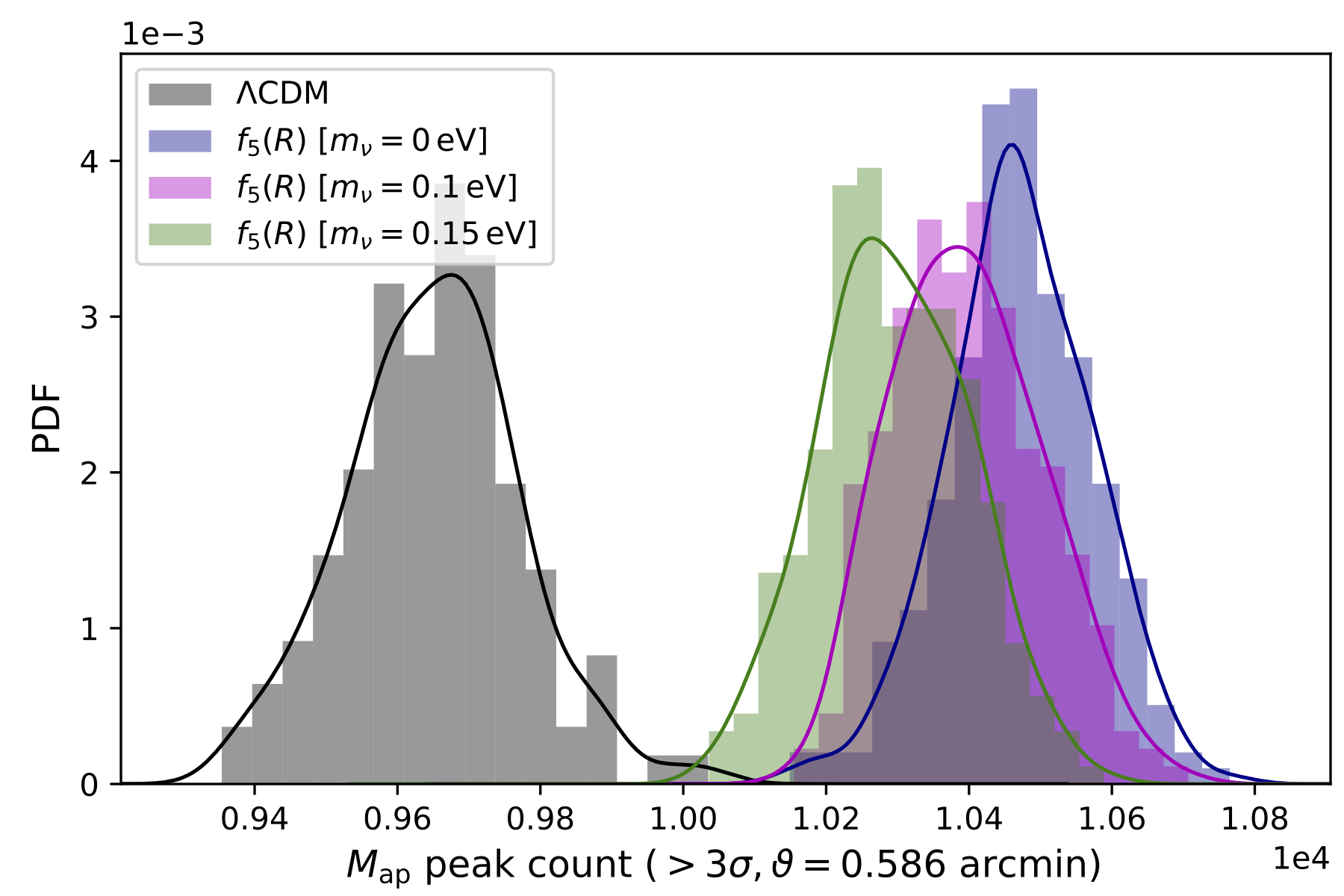Breaking degeneracies in modified gravity with higher (than 2nd) order weak-lensing statistics
| Authors: | A. Peel, V. Pettorino, C. Giocoli, J.-L. Starck, M. Baldi |
| Journal: | A&A |
| Year: | 2018 |
| Download: | ADS | arXiv |
Abstract
General relativity (GR) has been well tested up to solar system scales, but it is much less certain that standard gravity remains an accurate description on the largest, that is, cosmological, scales. Many extensions to GR have been studied that are not yet ruled out by the data, including by that of the recent direct gravitational wave detections. Degeneracies among the standard model (ΛCDM) and modified gravity (MG) models, as well as among different MG parameters, must be addressed in order to best exploit information from current and future surveys and to unveil the nature of dark energy. We propose various higher-order statistics in the weak-lensing signal as a new set of observables able to break degeneracies between massive neutrinos and MG parameters. We have tested our methodology on so-called f(R) models, which constitute a class of viable models that can explain the accelerated universal expansion by a modification of the fundamental gravitational interaction. We have explored a range of these models that still fit current observations at the background and linear level, and we show using numerical simulations that certain models which include massive neutrinos are able to mimic ΛCDM in terms of the 3D power spectrum of matter density fluctuations. We find that depending on the redshift and angular scale of observation, non-Gaussian information accessed by higher-order weak-lensing statistics can be used to break the degeneracy between f(R) models and ΛCDM. In particular, peak counts computed in aperture mass maps outperform third- and fourth-order moments.

